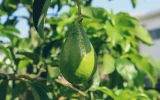13 Most Common Cherry Fruit Tree Types (With Pictures)
Cherry trees are beloved for their delightful fruit and beautiful blossoms, with several varieties widely cultivated around the world. Each type of cherry tree offers unique characteristics, from the sweet and juicy Bing cherries to the tart and versatile Montmorency. In this article, we will guide you through the most common cherry fruit tree types, complete with pictures.
The most common cherry fruit tree types are the sweet cherry (Prunus avium) and the sour cherry (Prunus cerasus). Sweet cherries, like Bing and Rainier, are typically eaten fresh. Sour cherries, such as Montmorency and Morello, are often used in cooking and baking.
Some cherry types aren't just for eating - they're also star performers in gardens, flaunting stunning blossoms that can transform any landscape. Let's discover more about the diverse and surprising world of cherry trees!
Summary
- There are two main types of cherry trees - sweet cherry varieties like Bing, Rainier, and Lapins which produce large, sweet fruits, and sour cherry varieties like Montmorency and North Star which produce smaller, tart fruits good for baking.
- Ornamental cherry trees like Yoshino, weeping cherry, and Higan cherry are grown for their beautiful flowers and are often sterile hybrids that do not produce edible fruit. They provide aesthetic value rather than fruit production.
- Wild cherry species like Black cherry and Chokecherry are native North American trees that produce small, tart fruits that can be used for jams and jellies but are not typically eaten fresh.

On this page:
| Variety | Type | Description |
|---|---|---|
| Bing Cherry | Sweet cherry | Very large and sweet |
| Rainier Cherry | Sweet cherry | Yellow with red blush, very sweet |
| Lapins Cherry | Sweet cherry | Self-fertile, large and juicy |
| Stella Cherry | Sweet cherry | Early ripening, self-fertile |
| Sweetheart Cherry | Sweet cherry | Heart-shaped, sweet and tangy |
| Emperor Francis | Sweet cherry | Pale flesh perfect for canning |
| Montmorency Cherry | Sour cherry | Firm flesh perfect for baking |
| North Star Cherry | Sour cherry | Compact, good for jam |
| Yoshino Cherry | Flowering cherry | Pale pink blooms in spring |
| Weeping Cherry | Flowering cherry | Cascading branches, pink or white blooms |
| Higan Cherry | Flowering cherry | Blooms multiple times per year |
| Black Cherry | Wild cherry | Dark fruit, decorative bark |
| Chokecherry | Wild cherry | Small tart fruit for jam |
Sweet Cherries
Scientific name: Prunus avium
Sweet cherries, scientifically known as Prunus avium, are highly appreciated for their sweet, palatable fruits and decorative blossoms. These cherry trees not only delight with their dark, purple-red cherries but also with clouds of white to light pink flowers in the spring.
Bing cherry trees produce very large and sweet fruits
The Bing cherry is a staple among sweet cherry varieties. Recognized for its large size and deep, mahogany-red color, your Bing cherry is amongst the sweetest of fruits, often enjoyed fresh. Cherry fruits are among the most profitable fruit trees to grow.
It was developed in Oregon in the 1870s and is known for its large, firm, juicy fruit with excellent sweet flavor. Bing cherries have a deep red color when ripe and are widely grown commercially and in home orchards.
Rainier cherry trees have distinct golden-yellow skin
With its distinctive golden-yellow skin and a blush of red, the Rainier cherry adds a bright pop to your fruit bowl. It is also called the White Gold cherry and is prized for its delightful flavor.

The flesh is creamy yellow and very sweet. Rainier is prized for its exceptionally sweet flavor and is often considered the peak of cherry season.
Lapins cherry trees are sweet self-fertile varieties
A Lapins cherry tree could be the perfect addition to your garden if you’re looking for a self-fertile variety. It is a cherry cultivar developed in Canada.
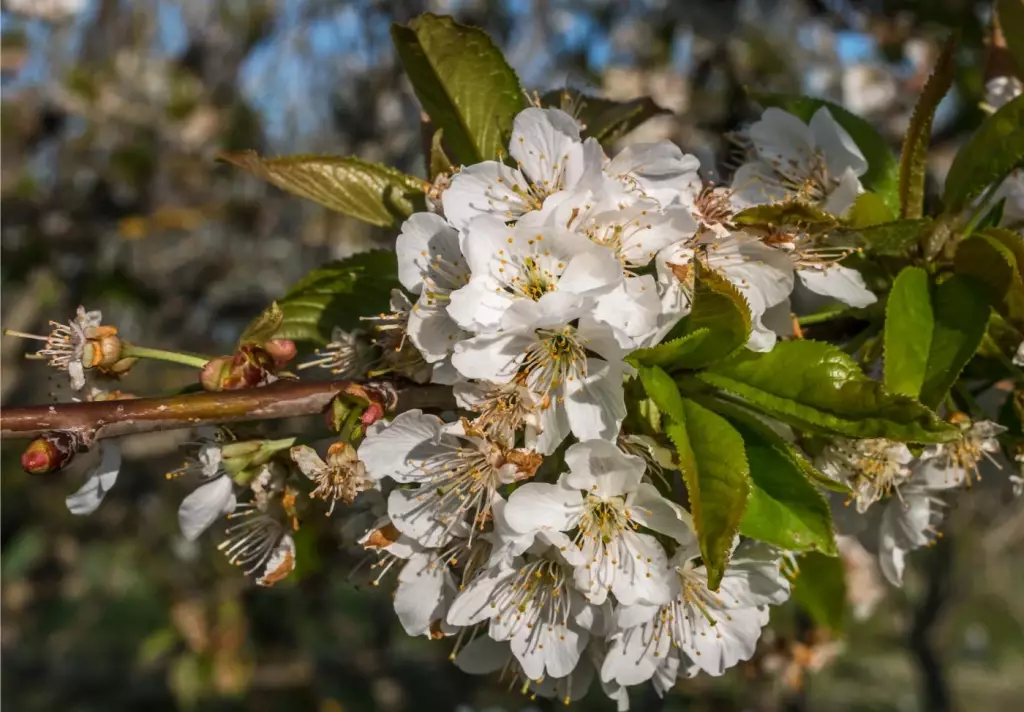
It produces large, firm, dark red fruit with good flavor and resistance to cracking. It can produce fruits even without needing another cherry tree nearby for pollination. Lapins are a productive, hardy tree that ripens its fruit in mid-season, spreading out the harvest.
Stella cherry tree is another self-fertile variety
The Stella cherry is another self-fertile variety suitable for colder climates. It bears medium to large, nearly black cherries with good sweet flavor in mid-season.
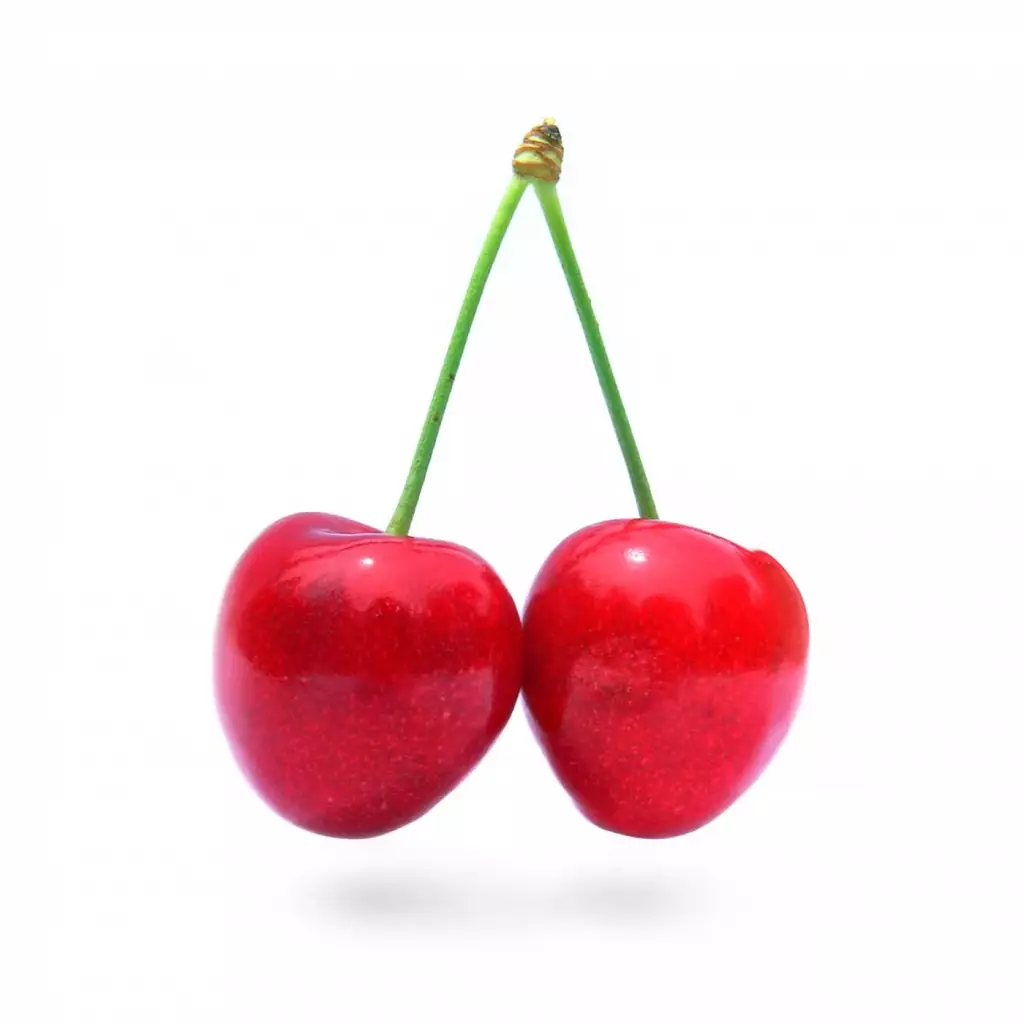
Stella is cold hardy and productive. It's an excellent choice for home gardens, being one of the first sweet cherries to ripen each season.
Sweetheart cherry bears heart-shaped fruits
As the name suggests, the Sweetheart cherry bears heart-shaped fruit with a firm, red flesh that's both sweet and tangy. This variety holds the unique feature of ripening later in the season, extending your cherry harvest joy.
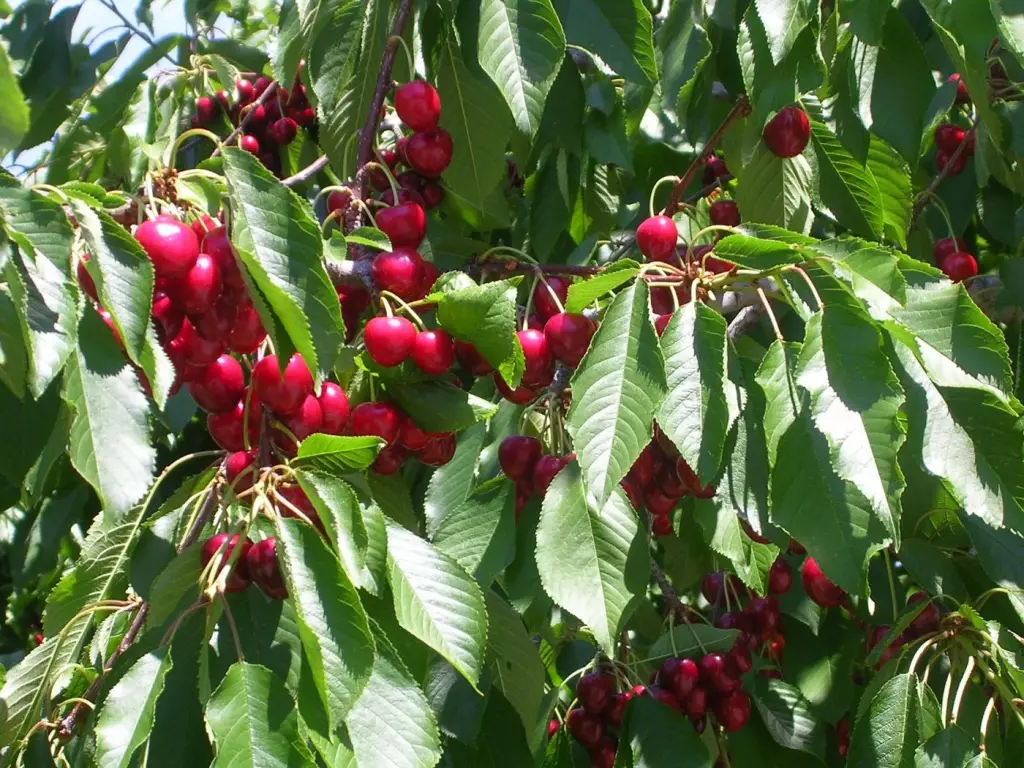
Sweetheart is a newer sweet cherry cultivar, that is also self-fertile and productive, making it a good choice for home growers.
Emperor Francis cherry is a heirloom variety
The Emperor Francis is an old European heirloom variety with large, bright red fruit and good flavor. It is not self-fertile and needs another variety for cross-pollination. Emperor Francis ripens in early mid-season.
If you're a fan of canning or making preserves, the Emperor Francis sweet cherry is your go-to choice. This variety is known for its light-colored, nearly translucent flesh that's both sweet and rich, perfect for your homemade cherry jam creations.
Sour Cherries
Scientific name: Prunus cerasus
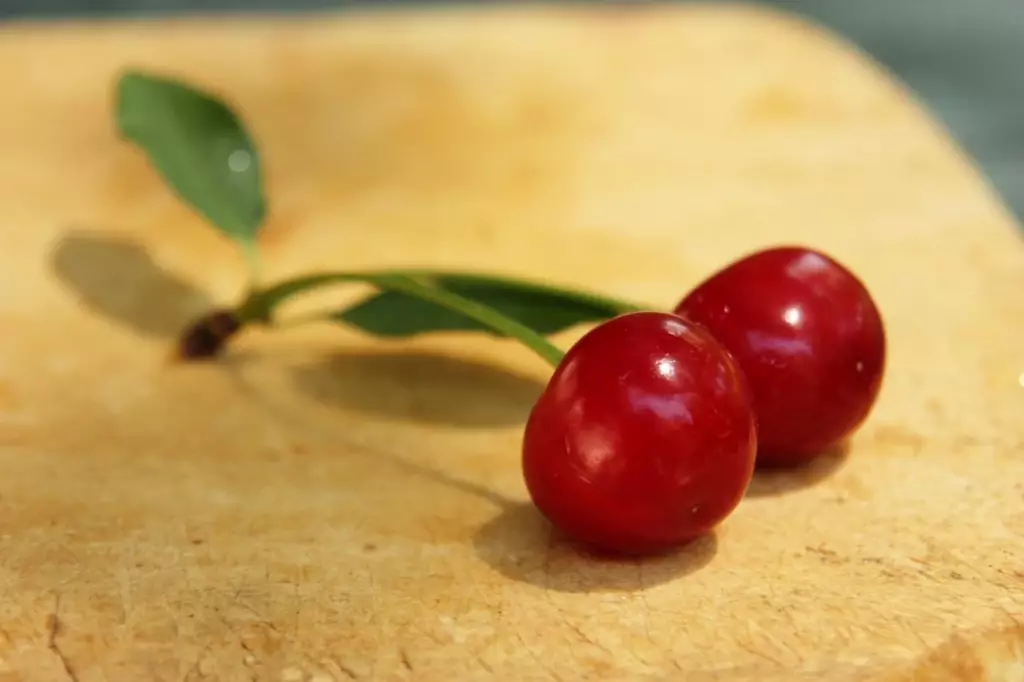
The Sour cherry, also known as Prunus cerasus, is beloved for its tangy flavor and is a popular choice for pies, jams, and preserves. Known for its vibrant cherry blossoms, the sour cherry tree adds both aesthetic and culinary value to your garden.
The Montmorency cherry is good for making classic tart cherry pies
Montmorency cherries are one of the most popular sour cherry varieties grown commercially in the United States. They are medium to large with bright red skin and pale yellow flesh.

Montmorency cherries are prized for baking and processing into juice, jams, and pie filling due to their bright tart flavor and firm texture.
The North Star cherry is suitable for smaller spaces
North Star cherries were specially bred at the University of Minnesota as a dwarf sour cherry variety. They are smaller in size than Montmorency with deep red skin and flesh.
North Star cherries are extremely hardy, surviving temperatures as low as -40°F, making them suitable for northern climates.
The flavor of North Star cherries is reported to be more intense and sweeter than Montmorency cherries. The dark flesh also produces darker cherry juice and pie filling compared to the pale juice from Montmorency. It's hearty, producing a reliable crop of tart cherries that are perfect for your homemade jams and preserves.
If you are aiming to plant dwarf cherry varieties such as North Star cherry, you may refer to this article for the optimal tree planting density per acre.
Ornamental Cherries
Ornamental cherry trees are prized for their beautiful spring blooms. These trees are often found in gardens and parks for their aesthetic value rather than fruit production.
Yoshino cherry trees are sterile hybrids
Prunus x yedoensis, commonly known as the Yoshino cherry tree, is native to Japan and widely celebrated for its clusters of white to pale pink flowers.
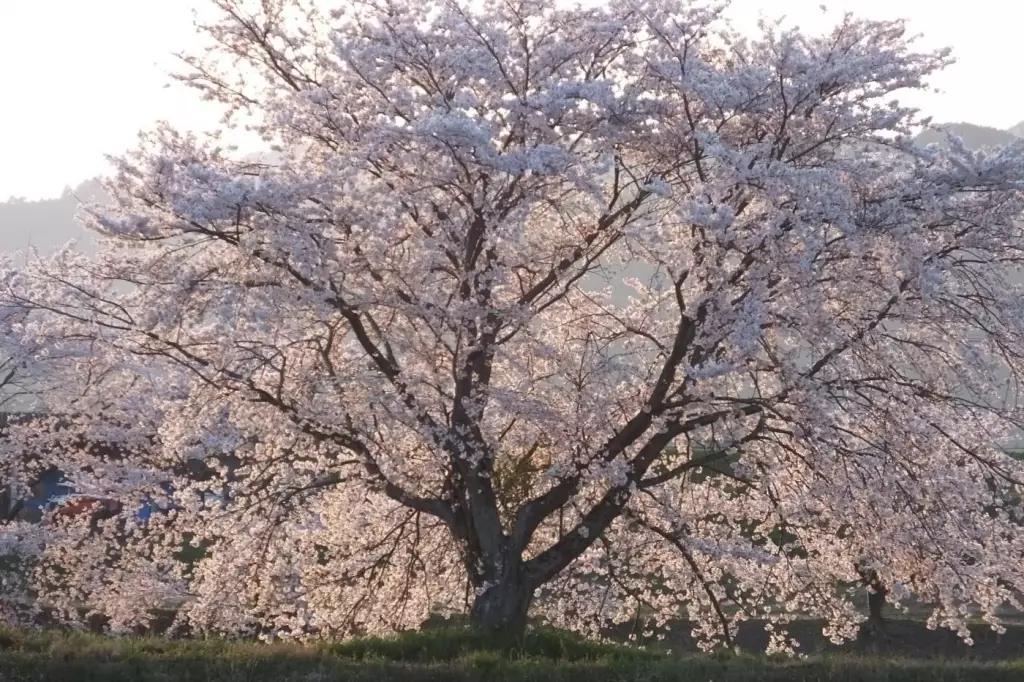
Every spring, Your Yoshino cherry tree can transform your garden into a picturesque scene, often associated with the famous sakura, or cherry blossoms, in Japan.
Yoshino cherries generally do not produce fruit, as they are sterile hybrids bred for their flowers rather than fruit production.
Weeping cherry is known for its drooping form
The weeping cherry tree, a form of Prunus subhirtella, is distinguished by its cascading branches that produce an abundance of pink to white flowers.
Its elegant, drooping form creates a striking display, and if you're looking to add a dramatic flair to your landscape, the double flowers of some weeping cherry varieties offer an even more decorative look.
Like Yoshino cherries, many weeping cherry varieties are sterile and do not produce fruit. However, some weeping cherries can produce small, inedible sour cherries.
Higan cherry offers more than just springtime beauty
Known for its extended blooming period, this resilient ornamental can display its pink flowers several times a year under the right conditions, bringing a splash of color to your yard more than just once a season.
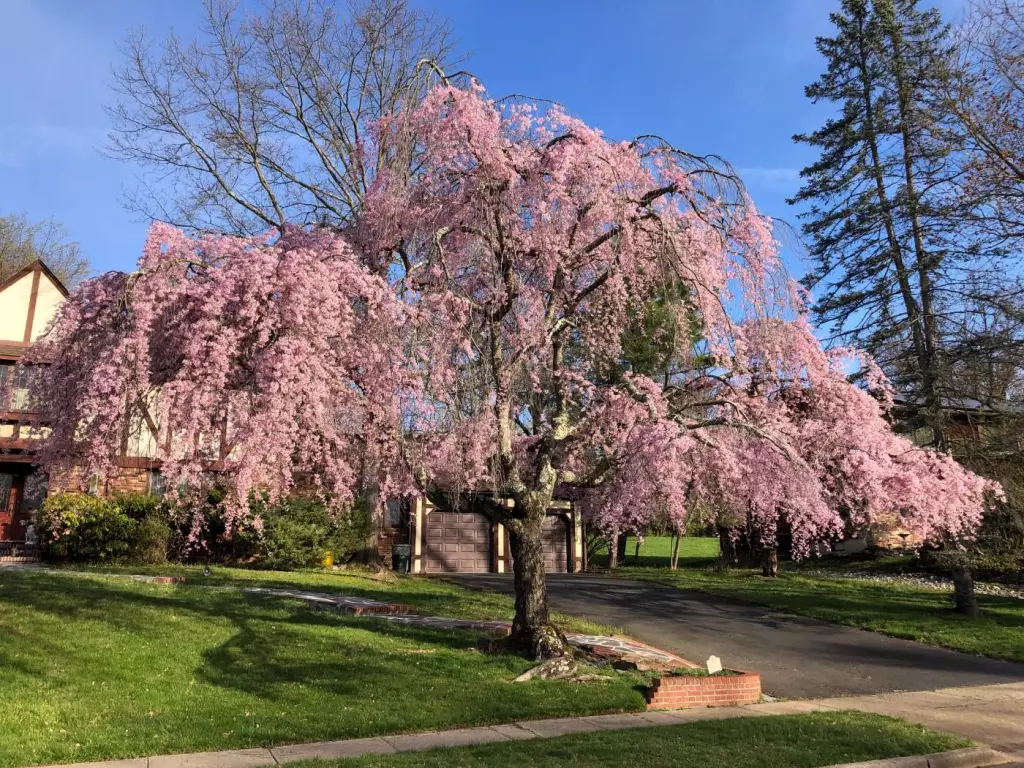
The Higan cherry produces small oval drupes that ripen from red to black in autumn. However, the fruits are sparse and not particularly noticeable, as they are hidden by the branches and leaves.
So while Higan cherries can produce some fruit, they are grown primarily as ornamental trees for their flowers and weeping habit rather than for fruit production.
Wild Cherries
While exploring cherry varieties, you might come across both the Black Cherry and the Chokecherry. Each of these has distinctive characteristics worth noting.
Black cherry is a wild cherry species found in North America
The Black Cherry, or Prunus serotina, is often called the wild cherry tree. Recognized by its dark fruits and lustrous, dark green leaves, this species is native to North America.
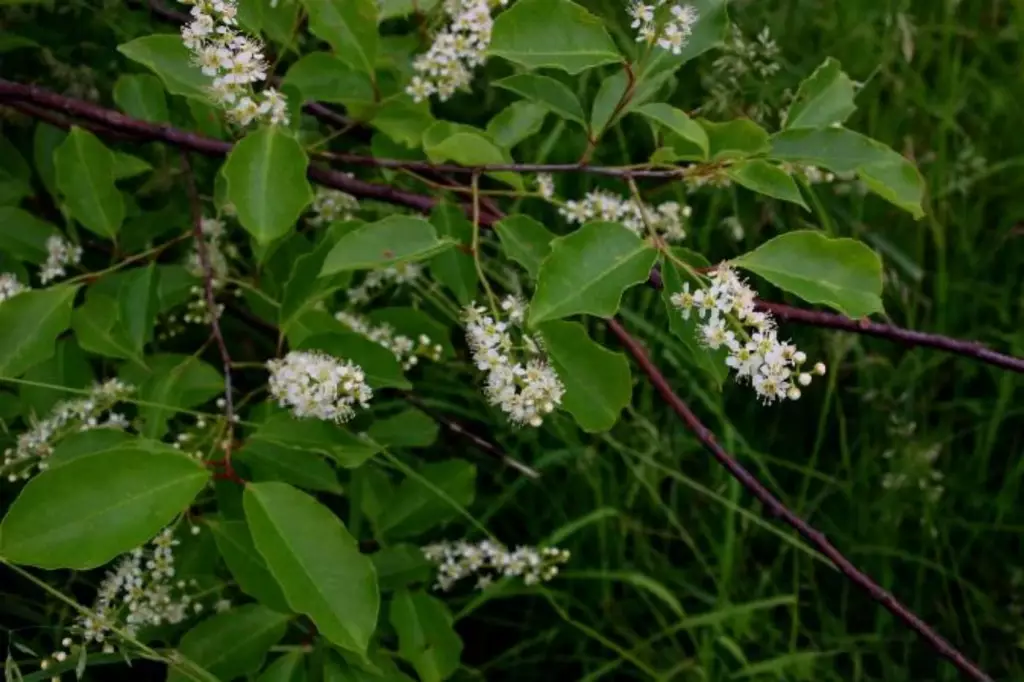
Your garden can benefit from its aesthetically appealing bark, which features a unique plate-like pattern. Black Cherry trees also produce veneer-grade wood that can fetch high prices. You can take a closer look at how profitable cherry trees can be per acre in this detailed breakdown.
Chokecherry can be used to make jams and jellies
Also known as Prunus virginiana, Chokecherry trees produce small, red-to-black fruit with a tart flavor. These cherries are not typically eaten fresh but rather used in jams and jellies.
You'll find that these trees are quite hardy and can add a rustic charm to your landscaping.

